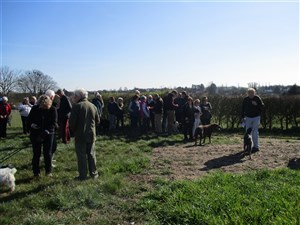
Community Power
At RCCE, we believe that communities have the power to influence change.
We work with local communities to plan for their future, by supporting parish
councils and community groups in the production of Community Led Plans.
The different types of Community Led Plan are:
- Parish Plans
- Neighbourhood Plans
- Village Design Statements
These are explained below, and in a comparison grid at the foot of the page.
Our dedicated team of Community Engagement Officers can provide support by attending meetings, advising on funding and how to
involve everyone in the project. Information Packs are
available to help you through the process.
We can also put you in touch with other communities who have completed
Community Led Plans and shaped their own future.
What is a Parish Plan?
A Parish Plan determines the future of your community, and
how it can change for the better.
It is a document that sets out a vision for the future of the parish and outlines
how that can be achieved in an Action Plan.
The Parish Plan process may include:
- A Village Appraisal – a household questionnaire to assess needs and aspirations of local people
- Participatory Appraisals – hands-on interactive workshops
- Business Surveys
- Creation of an Action Plan
What is a Village Design Statement?
A Village Design Statement provides an opportunity for your
community to describe how they feel the physical character of the parish can be
enhanced.
It is a document that identifies what is special, unique and distinctive about
the character of the parish.
It provides design guidance to influence change and improve the physical
qualities of the area.
What is a Neighbourhood Plan?
The Localism Act introduces a new right for a parish council or a neighbourhood forum to produce a ‘neighbourhood development plan’ setting out policies against which traditional planning applications could be judged. These policies could cover:
- planning objectives for the neighbourhood;
- the broad planning context (e.g. transport connections), local facilities, services;
- key neighbourhood projects and infrastructure priorities;
- development management policies on housing, economic development, environment;
- site-specific policies on housing, economic development and environmental issues;
- changes
in the coverage of some planning designations.
(Source: Supporting Communities and Neighbourhoods in
Planning Prospectus - Appendix 2)
Neighbourhood Planning initiatives will be additional to, and not a replacement
for, the existing planning system in England. The plans will be allowed to
accommodate more housing than proposed by the local authority’s development
plan but they will not be able to provide for less. Provided a neighbourhood
development plan is in line with national planning policy, with the strategic
vision for the wider area set by the local authority, and with other legal
requirements, local people will be able to vote on it in a referendum. If the
plan is approved by a majority, then the local authority will bring it into
force.
|
|
Parish
Plan |
Neighbourhood
Plan |
Design
Statement |
|
Purpose |
Assess
current and future potential issues and set out an action plan to tackle the
issues. |
Assess
physical (spatial) assets and set out what should be protected and where future
development should go. |
Assess
character and set guidelines to influence what future development should look
like. |
|
Status |
A
business plan for the community, adopted by the parish council to take
forward in partnership with other organisations. Part of
the Local Development Framework evidence base (NOTE: Some local
authorities have also approved as a material consideration in the
determination of planning applications) |
Part of
the local authority development plan (subject to an independent examination
and support by local referendum) Might
also result in a ‘Neighbourhood Development Order’ which (subject to an
independent examination and support by local referendum) will set out
development proposals without the need to seek planning permission. |
Sits
outside the local authority development plan as ‘a material consideration in
the determination of planning applications’ or ‘planning guidance’ (subject
to local authority approval) Some
authorities have adopted VDS as Supplementary Planning Documents to make them
part of the Local Development Plan |
|
Document |
Description
of the services and facilities and their strengths and weaknesses. |
Expected
to include: |
Assessment
of the character of the built and natural environment. |
For more
information contact the
Resources are
available in the Members Area
For more information, call 01376 574330 or contact Sarah
Sapsford

